Top 7... Games that broke the fourth wall
Remind us to think of a strapline for this article
This is the first slide of the Top 7
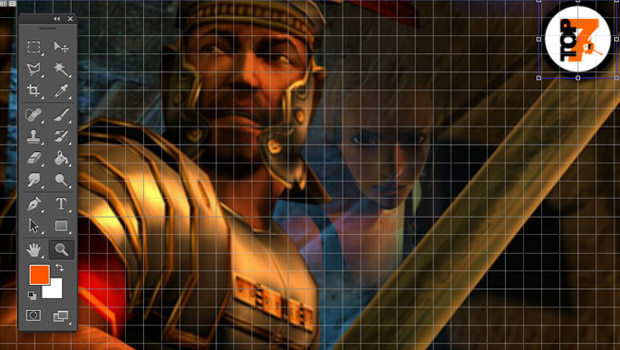
From the wooden floorboards of the theater stage, to the plastic housing of your grandparents old CRT TV, the fourth wall has long been used as a way to describe the barrier between performance and audience. But that magic transparent window through which one observes the stories within can be broken, sometimes altogether shattered, when a character stops what theyre doing and turns to address the audience directly. Were no longer passive observers, but active participants. Their world has reached ours, and ours has become theirs.
Games, too, have had a history of tearing the fourth wall down on players, and due to their interactive nature, theyve often done so in ways that have far surpassed those of theater and television. Here are some examples of the games that included the most glorious fourth-wall shattering moments, intentionally destroying immersion and reminding us that we were, indeed, playing a game--and that we weren't in control.
7. The Secret of Monkey Island
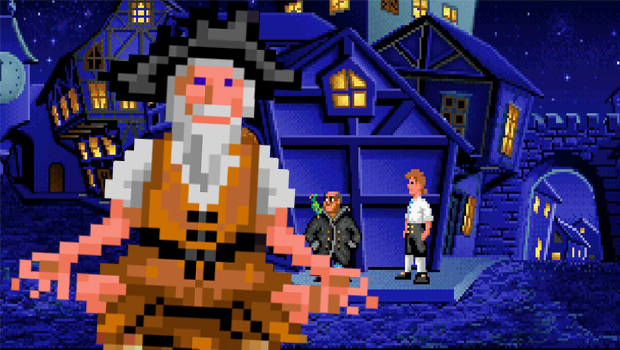
Its a joke a minute in The Secret of Monkey Island, as youd expect from the brains of Ron Gilbert, Tim Schafer and Dave Grossman. And aside from spawning the venerable Monkey Island series, it went down as one of the point-and-click genres most iconic titles. An amusing outcome, considering the digs that the game made at itself--and its paying customers.
Take Herman Toothrot, a character whos fed up to the back teeth with Guybrush Threepwoods incessant questions and general cluelessness. At numerous points he turns to address the player in a can-you-believe-this-guy manner; other times, hell share a knowing laugh, from character to player, at the expense of our poor hero. Eventually Guybrush asks: Who are you talking to? Why, the people watching, of course, says Herman. Guybrush looks in our direction, confused. Um... sure, he says. Oh, and when Guybrush finally reaches Monkey Island(), he says the sight is totally worth $59.95 plus tax. Sounds like a good price for a game...
6. StarTropics (NES)
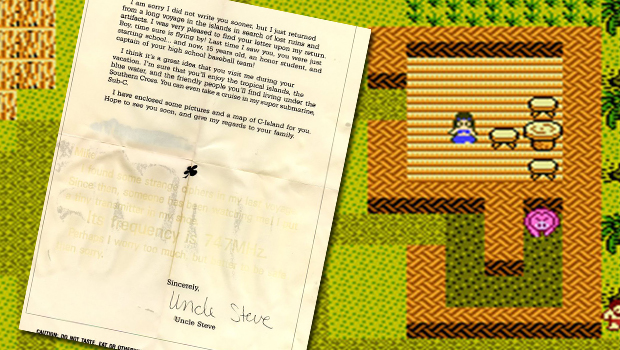
Back in the day, every game and its dog would come with some form of map, or code wheel, or manual that served as a form of copy protection, such as entering word six from page 48. Simple, but effective for the time. StarTropics came with a piece of parchment; on it was a note scrawled by one of the games characters, asking the player to visit him at his laboratory. A cute way to start the game, sure--but later on, when a third party delivers an ominous message that directs the player character to dip the letter in water, it immediately became something more significant.
Dip the letter in water. The real letter, into real water. Doing so revealed a hidden code, used later in the game, along with a message directing the player to their next course of action. It was a bold idea, but one that was--pardon the pun--watered down somewhat in the subsequent Wii Virtual Console release, where it was reduced to clicking on-screen icons of the letter and a bucket of water in order to reveal the necessary information.
5. Eternal Darkness: Sanitys Requiem
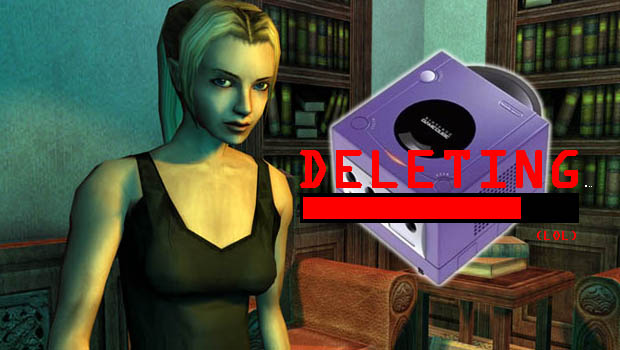
Eternal Darkness's shocks may have wandered into monster closet jolt jobs now and then, but when it reeled back to the unsettling and the macabre, it was a remarkably frightening experience. So much as look at an enemy, and itd start to do a number on your characters noodle via the in-game insanity meter. Subtle things, like the camera angle taking on a slight skew or the sound becoming muted, were common. But as the crazies started to kick in, the game would fake a glitch or throw up a Blue Screen of Death. It could even change the Video input channel or kick you back to the GameCube start-up screen, just to pull your leg.
Sign up to the GamesRadar+ Newsletter
Weekly digests, tales from the communities you love, and more
Yet they were cheap parlour tricks compared to when it displayed a prompt asking Do you want to delete all your saved games? The only two options: Yes and Continue without saving. Heart attacks were had at the progress bar that followed idle thumbs lazily tapping through yet another dialogue box, and when the game proudly declared that all saved games were deleted, it was the tensest of tense moments when its true nature was revealed.
4. X-Men
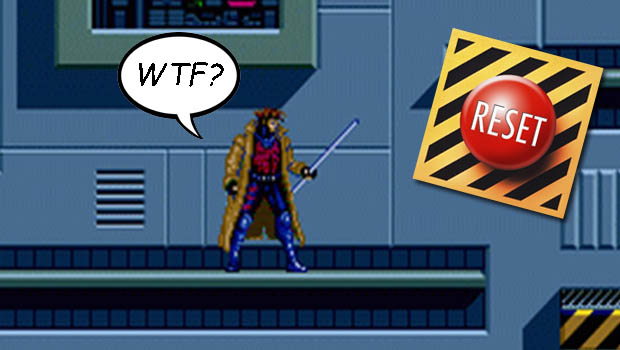
The X-Men have starred in their fair share of games, but one of their most memorable emerged in 1993 when the Sega Mega Drive/Genesis got X-Men, a typical side-scrolling platformer-slash-beat em up. Well, mostly typical, for amid the jumping and the punching, a level titled Mojos Crunch would more or less stall after fighting. The game, quite simply, would not progress. The only hint offered? Reset the computer.
Go ahead, look around all you like--theres no computer or reset switch to be seen. In fact, the only reset switch anywhere was the one on... your... console. In an era without hard drives or game saves, resetting a console mid-game--after a boss fight, no less--was second only to ripping the game cartridge out of the machine and throwing it under a truck. It required one hell of a leap of faith, but performing a soft reset was exactly what the game demanded, and when those green ones and zeroes appeared and the story advanced via 90s era cartoon panels, that leap of faith was rewarded in a truly memorable fashion.
3. Another Code: Two Memories (a.k.a. Trace Memories)
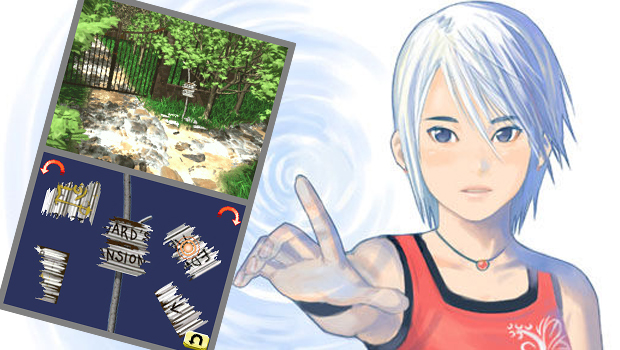
In 2004 the DS was the new handheld on the block, and with its microphone and dual screens, developers were falling over themselves to cook up games that played to Nintendos hardware design. Many tried, but none did so in a manner as remarkable as the oft-overlooked Another Code.
An adventure-puzzler at heart, its main character was armed with a little grey device called a Dual Another System, which looked and behaved suspiciously like the very DS you were holding in your hands. This brought your DS into the game world as an essential inventory item, and as such, Another Code would present puzzles that required you to manipulate the DS as though it were in that world. Case in point: the stamp puzzle. Presented with a sketchbook on the top screen and a rubber stamp on the bottom screen, the task of stamping the book isnt solved in the traditional "press buttons" manner; instead, you must physically close your DS, pressing the two screens together. Open it, and youll find the stamps markings transferred to the top screen. A thing of beauty.
2. Batman: Arkham Asylum (Xbox 360, PS3, PC)
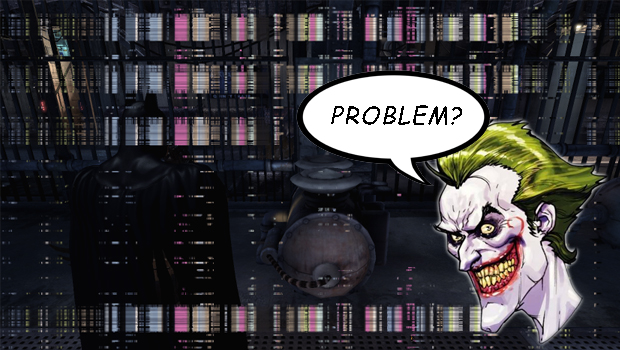
It was one of the best games of 2009, and certainly--until Arkham City--the best Batman game to land on the gaming scene. And along with a raft of gadgets, sumptuous environments and a simple-yet-layered combat scheme, Batman: Arkham Asylum also contained one heck of a mind screw via Scarecrows psychosis gas.
A routine stroll down one of Arkhams corridors is interrupted by a garbled screen and game freeze. With hearts in throats, and fingers inches from the Power button, we watch as the game resets back to the opening sequence, only with an inverted narrative: the Jokers behind the wheel of the Batmobile, and Batman is a prisoner in the passenger seat. Bats is wheeled into the asylum where hes mocked by the Joker, Harley, and Scarecrow, when the Joker puts a gun to Batmans head and pulls the trigger. Game over. What did we do wrong? How could we have avoided death? The gameplay tip on the loading screen gives the answer: "Use the middle stick to dodge Joker's bullet." The middle stick? Oh. Right. Well played.
1. Metal Gear Solid (PlayStation)
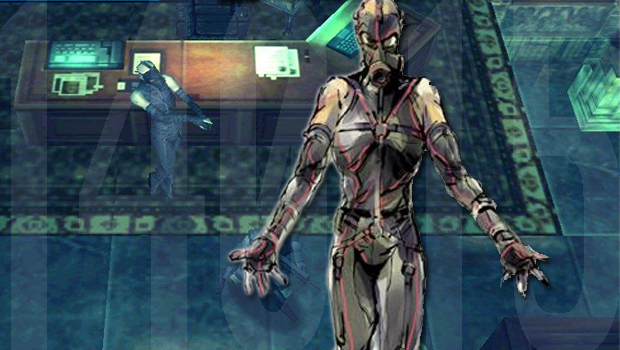
From the moment Kenneth Baker told us to look for Meryls codec frequency on the back of the CD case, it was clear that Metal Gear Solid was special. But that would turn out to be the tamest instance of MGSs wall-shattering concepts, for a short while later we were introduced to Psycho Mantis. To start, he made our controller "move" by activating the rumble feature. Then, he read the contents of our memory card, remarking on the other files wed stored on there ("You like Castlevania, don't you?"). And when the battle began, he found a way to change the signal inputs on our TV (or made it look that way, at least).
But that wasnt all. Turns out, Psycho Mantis actually could read minds. No matter what we did, he was able to respond to it immediately--more than respond, he anticipated. Were we finally able to foil this clairvoyant foe by unplugging the controller and inserting it into the second port; and this was just the beginning of MGS's tradition of breaking the fourth wall.
This is the conclusion to the Top 7
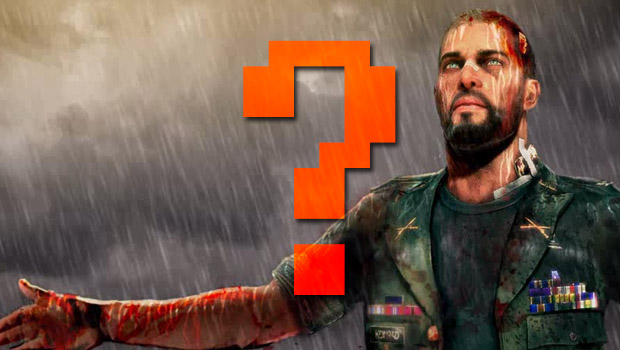
Those are ours, but what about yours? Is your top fourth wall breaker the moment when Max Payne realizes hes in a videogame? When Niers D ending demands a heroic sacrifice and asks you to delete your save file for real? Heck, between Metal Gear Solid 2s FISSION MAILED screen and Metal Gear Solid 4s Oh, were on PS3 now! codec conversation, Kojima could practically take this out single-handedly. But let us know. Yes, you. Were looking at you. Right... now...
And if you're looking for more, check out the top 7 creepiest gaming urban legends and the top 7 most badass game characters.



